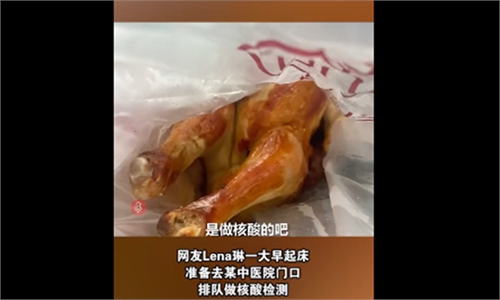
Residents line up to take nucleic acid test on January 26,2022,at Fuchengwuqi community in Yanjiao town, Sanhe, North China's Hebei Province. Photo: Hao Lei/GT
As the recent epidemic outbreak in China continues to worsen with more than 2,000 new COVID-19 infections reported in the Chinese mainland on Monday, Wu Zunyou, chief epidemiologist with the Chinese Center for Disease Control and Prevention, revealed that imported infections, transmission of the Omicron variant and a high proportion of asymptomatic and mild cases are three major causes to the expanded clustered outbreak across the country. Wu also said he is confident that the latest outbreak will be significantly brought under control in the coming weeks if measures are effectively taken.
China faces its severest domestic COVID-19 outbreak in two years. The newly reported infections cover 16 provinces, autonomous regions and municipalities across the country. Meanwhile, the Omicron variant has replaced Delta as the dominant variant.
The simultaneous occurrence of local COVID-19 clusters has been influenced by the high incidence of the epidemic around the world, especially in Asia, said Wu.
Since January 2022, China has reported a significant increase in local clusters of infections, with the average number of cases per month reaching about 10 times that of 2021 and 2020.
Imported cases come mainly from neighboring countries and regions, such as Vietnam, South Korea, Myanmar, Laos, Russia and the Hong Kong Special Administrative Region, said Wu.
The high transmission of the Omicron variant is another factor, he said, noting that it accounts for about 80 percent of the recent COVID-19 cases reported in China, with BA.2 and BA.1.1 subvariants being the most prevalent in the country.
Besides, the high proportion of asymptomatic patients or mild cases in the latest outbreak also makes it hard to detect the virus, he said.
The chief epidemiologist noted that the dynamic zero-COVID policy will still be China's general guideline to contain the epidemic, urging local authorities to take measures that can "detect virus more sensitively and respond more quickly and accurately."
However, Wu also eased public concerns about the current situation of the epidemic in China, noting that in terms of the number of daily cases and deaths, China has "achieved great success" compared to Europe, North America and neighboring countries where the Omicron variant also spread.



